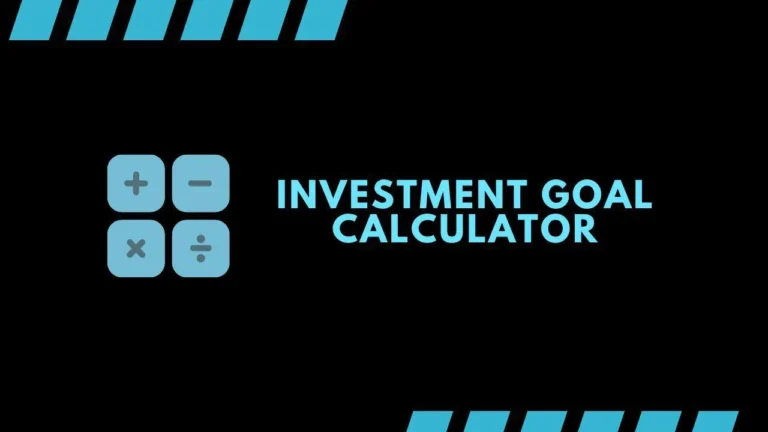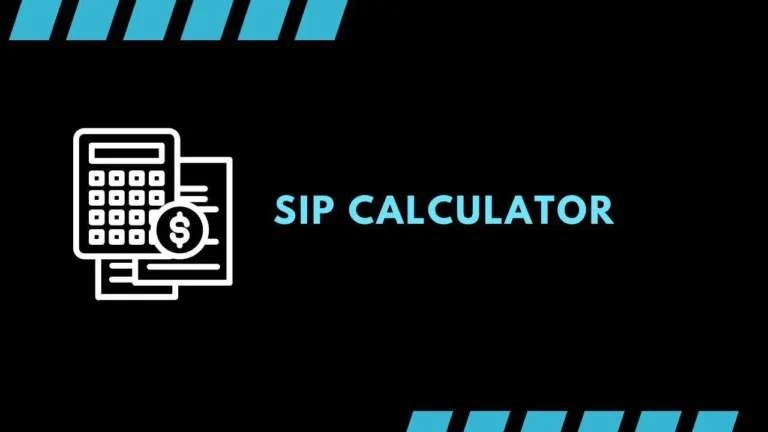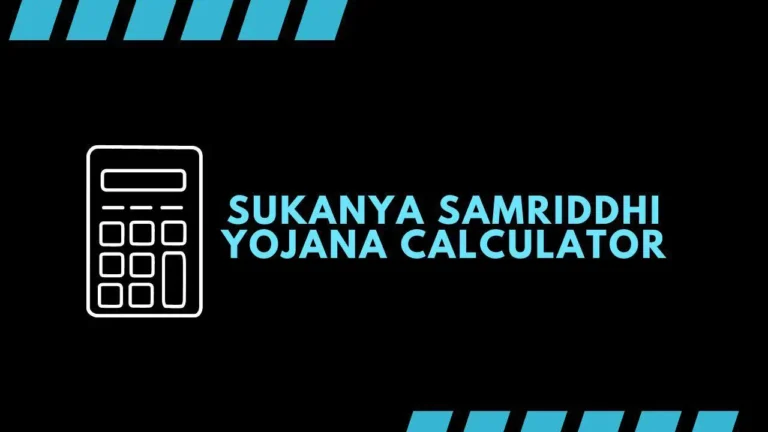Best EMI Calculator for Home Loan, Personal Loan, and Car Loan with Interactive Chart
Whether you’re dreaming of a new home, a shiny car, or a much-needed personal loan, our comprehensive EMI calculator is your one-stop solution. Dive into a seamless experience that helps you understand your monthly commitments without jargon.
The EMI Calculator will help you visualize how much EMI you need to pay per month and how you can save on interest costs if you take a shorter loan tenure.
Loan EMI Calculator
Amount
Length
% Interest
Principal
Interest
Total Payable
Like the EMI Calculator? Bookmark this page and come back any time to check on EMIs. Share it with your friends, which helps them plan their EMI effectively.
Consider using our Investment Goal Calculator for your investment needs.
Key Features of the EMI Calculator
Our EMI Calculator lets you increase or decrease loan value, Tenure, and Interest rates swiftly. It helps you visualize the principal and interest that you need to pay over the years in chart format. This really helps you compare the principal and interest outgo and save money.
What is EMI?
EMI is a fixed payment amount made by a borrower to a lender at a specified date each calendar month. It is essentially a method by which loans are divided into monthly installments over the term of the loan. The EMI is composed of both the principal amount (the original amount borrowed) and the interest on that amount.
Check out our Personal Loan EMI Calculator
How does EMI work?
The calculation of EMI depends on three main factors:
- Principal Amount (P): The original sum of money borrowed or the outstanding amount that needs to be repaid.
- Rate of Interest (R): This is usually given on an annual basis, but for the purpose of EMI calculations, it’s taken on a monthly basis. For example, if the annual interest rate is 12%, the monthly rate will be 12%/12 = 1%.
- Loan Tenure (N): The period over which the loan needs to be repaid, generally measured in months.
Understanding the EMI Structure
- In the initial phase of the loan tenure: A larger portion of the EMI goes towards paying off the interest, and a smaller portion is used to pay off the principal.
- As the loan matures: The portion of EMI being utilized towards principal repayment increases, whereas the component used towards interest repayment decreases.
Benefits of EMI
- Predictability: EMIs offer borrowers predictability and peace of mind because they know exactly how much they need to pay each month.
- Flexibility: Lenders often provide various EMI options, depending on the borrower’s repayment capacity.
- Budgeting: EMIs allow borrowers to budget their expenses efficiently, as they know a fixed amount has to be set aside for loan repayment each month.
Points to Remember on EMIs
- If you prepay a part of your loan, you have the choice to either reduce your EMI amount for the remaining tenure or reduce the total tenure of the loan, keeping the EMI amount the same.
- There might be additional fees or penalties associated with late EMI payments, so always try to pay on time.
- Some loans come with the option of flexible EMIs, where the EMI amount might vary based on certain conditions agreed upon by the borrower and lender.
Check out our Mutual Fund SIP Calculator
Loans that Offer EMI in India
In India, Equated Monthly Installments (EMIs) are a common method for repaying various types of loans. Here are some of the loans where the repayment can be made in the form of EMIs:
- Home Loans: Used to purchase a new house, construct a house, or renovate an existing property. Home loans typically have longer tenures, ranging from 15 to 30 years or more.
- Personal Loans: Unsecured loans that individuals can use for various purposes like medical emergencies, travel, weddings, debt consolidation, etc. Their tenure usually ranges from 1 to 5 years.
- Car/Auto Loans: Taken to purchase new or used vehicles. The tenure for car loans typically ranges between 1 to 7 years.
- Two-Wheeler Loans: Specifically for purchasing motorcycles or scooters. The repayment period is generally shorter, ranging from 1 to 5 years.
- Education Loans: To cover tuition fees, hostel charges, books, and other educational expenses. Depending on the course and the amount, repayment can be stretched over several years, with some banks also offering a moratorium period during which the borrower doesn’t have to start repayments.
- Consumer Durable Loans: These are for purchasing household appliances, electronics like iPhones and laptops, and other consumer durables. The tenure is usually shorter, ranging from a few months to a couple of years.
- Business Loans: Availed by entrepreneurs and business owners for purposes like expanding business, purchasing machinery, working capital needs, etc. The tenure can vary based on the loan amount and the specific requirements of the business.
- Loan Against Property (LAP): A secured loan where one’s property is kept as collateral. It can be used for personal or business purposes. The repayment period can range from a few years up to 15 years or more.
- Gold Loans: Loans given against gold jewelry or coins as collateral. They typically have shorter tenures, ranging from a few months to a couple of years.
- Credit Card EMI: Credit cards allow users to convert their high-value transactions into EMIs. The tenure can range from 3 months to 24 months or more, depending on the bank and the specific transaction.
- EMI on Debit Card: Some banks and fintech companies in India have started offering the option to convert high-value purchases into EMIs directly through debit cards.
- Payday Loans: Short-term loans are meant to bridge the borrower’s cash flow gap between paydays. These typically have a very short tenure, usually up to a month or until the next payday.
- Travel Loans: These are personal loans specifically tailored for traveling, allowing individuals to pay for their vacations in installments.
Consider reading: 14 Financial Life Hacks For 2024 – Best Money Hacks
Tips and Tricks to Save Money on EMIs
Here are some tips and tricks tailored for the Indian financial environment to help you save on EMIs:
- Compare Before Borrowing: There are numerous banks and NBFCs (Non-Banking Financial Companies) in India that offer various loan products. It’s always a good idea to compare the interest rates, processing fees, and other charges before settling on one.
- Opt for a Shorter Loan Tenure: A shorter loan tenure might increase your EMI, but it’ll reduce the total interest you pay. Even if you can afford a longer tenure and are okay with paying a slightly higher EMI, you can save significantly on the interest component.
- Make a Higher Down Payment: If it’s a home or vehicle loan, consider making a larger down payment. This means your principal amount decreases, which in turn reduces your interest burden and EMI.
- Prepay When You Can: If you get bonuses or lump sum amounts, consider prepaying a part of your loan. This will either reduce your EMI for the remaining tenure or decrease the total tenure of the loan. However, always check for prepayment penalties.
- Negotiate Interest Rates: If you have a good credit score or have been a loyal customer of the bank, you might be able to negotiate a lower interest rate, which can help reduce your EMI.
- Refinance or Balance Transfer: This is especially popular for home loans. If another bank offers a lower interest rate, consider transferring your loan. This process is called balance transfer. It’s a good idea to do this in the early stages of your loan tenure, as that’s when the majority of your EMI goes towards the interest payment.
- Floating vs. Fixed Rates: Consider the pros and cons of both. Fixed rates remain constant, ensuring your EMI remains the same, but they’re usually higher than floating rates initially. Floating rates, on the other hand, vary based on market conditions, but they could offer savings if market rates go down.
- Avoid EMI Holidays: Some banks offer EMI holidays, where you can delay the start of your EMIs. While it may seem tempting, interest accumulates during this period, which can increase the overall cost of your loan.
- Review loans Periodically: Loan interest rates, especially floating ones, can change over time. Periodically review your loan, and if you notice rates have decreased, talk to your bank about adjusting your EMI or switching to a lender offering a better rate.
- Opt for Decreasing Term Insurance: If you’re taking out insurance for a home loan, a decreasing term plan can be cost-effective. As the outstanding loan amount decreases with time, the cover will also reduce, thus decreasing the premium.
- Keep an Eye on Processing and Other Fees: Sometimes, the advertised rates might be lower, but banks might compensate with higher processing fees or hidden charges. Always consider the overall cost, not just the interest rate.
- Maintain a Good Credit Score: A high CIBIL score can give you an edge when negotiating interest rates with banks. Always pay your dues on time, avoid taking on excessive debt, and monitor your credit report for discrepancies.
Closing Thoughts on EMI Calculator for Home Loan, Personal Loan, and Car Loan
In this article, we talked about EMIs and the EMI calculator in details. The EMI Calculator stands out as an indispensable tool for anyone looking to take charge of their financial future.
Whether you’re planning for a home loan, personal loan, or any significant purchase, understanding your monthly outlay is essential.
With an EMI Calculator, you can navigate these decisions with confidence, clarity, and ease. Gone are the days of unexpected financial surprises.
Equip yourself with the right tools, such as the EMI Calculator, and take the guesswork out of your financial commitments.
Remember, informed decisions lead to a more secure and stress-free financial journey. So, the next time you think of loans and repayments, use our EMI Calculator to plan your finances.
FAQs on EMI Calculator for Home Loan, Personal Loan, and Car Loan
How to calculate the loan amount for a personal loan?
To calculate the loan amount for a personal loan, you can use the formula E = Pr(1+r)^n/((1+r)^n-1). Here, P represents the principal amount, r is the interest rate, and n is the number of payments. This equation helps determine the loan amount based on these variables.
How much EMI should I pay for 10 lakh personal loan?
The amount of EMI you should pay for a 10 lakh personal loan depends on the interest rate and loan tenure. Use an online EMI calculator to determine the exact amount. It’s important to consider your monthly budget and financial goals before deciding on the EMI amount.
What is the EMI for 4 lakh personal loan for 5 years?
The EMI for a 4 lakh personal loan for 5 years depends on the interest rate. Use an online EMI calculator to determine the exact amount. Factors like your credit score and repayment capacity may also affect the final EMI. It’s important to compare different loan offers to find the best rate.
Can we get a 10 lakh personal loan?
Yes, you can get a 10 lakh personal loan from Kotak Mahindra Bank. They offer personal loans up to 10 lakhs with reasonable interest rates. The process to avail of the loan is quick and simple.
What is the EMI for 20 lakh home loan?
The EMI for a 20 lakh home loan can be calculated using a formula that takes into account the loan amount, interest rate, and tenure. By plugging in the values, you can find the monthly installment amount easily. This enables you to plan your budget and repay the loan in a structured manner. Ensure to check with your lender or use an online EMI calculator for an accurate result.
How much home loan can I get on Rs 40000 salary?
Based on a monthly salary of Rs 40,000, your repayment capacity for a home loan would be around Rs 20,000 per month (50% of income). Consequently, you could qualify for a loan amount of approximately Rs 24–26 lakh. Keep in mind that these figures may vary depending on the specific lender’s terms and conditions.
Can I get 90% home loan?
Yes, you can get a home loan of up to 90% of the property value if the loan amount is Rs. 30 lakhs or below, as per the guidelines by the Reserve Bank of India (RBI).
How much home loan can I get if my salary is 50000?
Your home loan eligibility depends on various factors, including your salary, credit score, and existing financial obligations. With a monthly salary of 50,000, lenders typically offer loans up to 60 times that amount, subject to meeting other criteria. It’s best to consult with banks or financial institutions to determine your exact loan eligibility.





